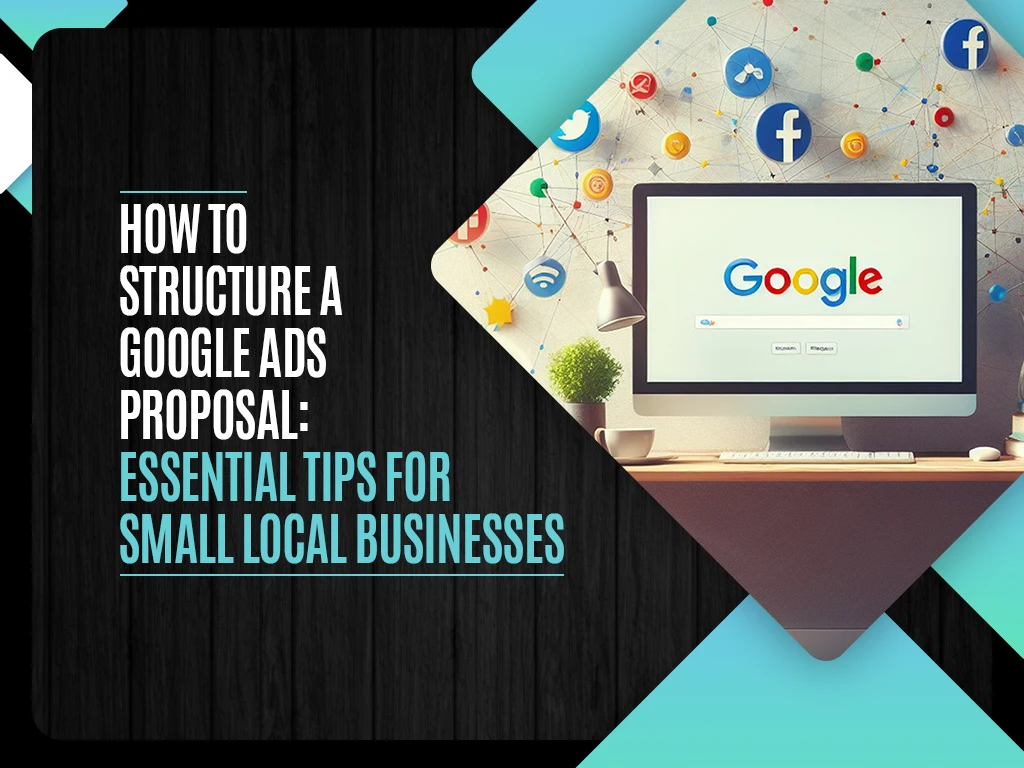How to Structure a Google Ads Proposal: Essential Tips for Small Local Businesses

Crafting a Google Ads proposal tailored for a small local business requires a strategic approach that aligns the power of digital marketing with the unique objectives of the client. By presenting a customized and thoughtful proposal, you’re setting the stage for a campaign that not only resonates with the target audience but also drives meaningful results. Incorporating insights on how to write a Google Ads proposal template can streamline the process, ensuring consistency and clarity in conveying the proposed strategies and expected outcomes to potential clients.
A well-structured proposal should articulate the value of Google Ads, detail the services you offer, and underscore the relevance of Local Services ads and the Google Guarantee for local businesses. As a business owner, showcasing your professional expertise and commitment to delivering tangible benefits can set your proposal apart. Your potential clients ought to see a clear connection between your proposed strategies and their expected outcomes, paving the way to a fruitful partnership.
Key Takeaways
- Tailor the proposal to the client’s specific objectives and local reach.
- Emphasize professional services offered and the benefits of Local Services ads.
- Illustrate the potential impact of Google Ads on the client’s business success.
Understanding the Client’s Needs and Goals
When constructing a Google Ads proposal for a small local business, it’s imperative to first understand their specific needs and aspirations. Your approach should be tailored to address the unique characteristics of their target audience, establish concrete campaign objectives, and acknowledge the competitive dynamics of the local market.
Identifying the Target Audience
Begin by defining who the client wants to reach. You need to create detailed profiles for different segments of the target audience—age, location, interests, and search behaviors are critical components. Consider using tools like Google Analytics to gather data and gain insights. This empirical understanding allows you to align the campaign more closely with the potential customer base and increase the chances of generating qualified leads.
Setting Clear Campaign Goals
Next, clarify what your client aims to achieve. Goals should be Specific, Measurable, Achievable, Relevant, and Time-bound (SMART). For example, if the objective is to increase online sales by 20% in the next quarter, you need to structure the Google Ads campaign to track conversion metrics rigorously. This precision ensures that every ad dollar spent is working towards tangible success for the business.
Assessing the Competitive Landscape
Finally, analyze who the client is up against. Review the competitor’s presence in the local market; assess their ad copy, offers, and keywords. This step is crucial to positioning your client’s ads effectively. By understanding the strengths and weaknesses of competitors, you can carve out a strategic advantage for your client and optimize the proposal to highlight opportunities to stand out.
Designing the Proposal
When crafting a Google Ads proposal for a small local business, the design must convey professionalism and a clear understanding of the client’s needs. Every component should align with the goal of demonstrating how your services will deliver a strong return on investment.
Crafting an Executive Summary
Begin your proposal with a concise and compelling Executive Summary. This section should highlight the core value proposition, summarize the proposed strategy, and pinpoint how it aligns with the client’s business objectives. Ensure it encapsulates the essence of the campaign’s potential impact on their sales and visibility.
Outlining Strategy and Services
In the Strategy and Services subsection, articulate your methodical approach to Google Ads campaign management. List the services you offer, such as keyword analysis and ad copy optimization, using bullet points for clarity:
- Keyword research and selection
- Ad copy creation and testing
- Bid management and optimization
Tie these services directly to how they solve the client’s specific challenges, using data-driven strategies that leverage analytics and metrics.
Detailing Budget and Pricing
Your Budget and Pricing section should clearly outline the financial investment required from the client. Provide a transparent breakdown of costs, using a table format to separate setup fees, monthly management costs, and the recommended ad spend:
| Service Offered | Setup Fee | Monthly Fee | Recommended Ad Spend |
| Google Ads Management | $XXX | $XXX | $XXX |
| Keyword Optimization | Included | Included | – |
| Monthly Analytics Report | Included | Included | – |
Affirm the value each service brings, reinforcing how this investment generates a meaningful return.
Demonstrating Credibility and Past Success
Establish your Credibility and Past Success by detailing previous successful campaigns. Insert brief case studies or testimonials that emphasize your agency’s proficiency and effective results. This could include before-and-after scenarios showcasing your data-driven solutions and the positive impact on businesses similar to your client’s.
Proposing a Timeline and Next Steps
Finally, outline a clear Timeline and Next Steps. Present a straightforward plan of action using an italicized timeline, detailing key milestones, from the initial contract signing to the launch and review of the campaign:
- Contract Signing: Within 1 week of proposal acceptance
- Campaign Development and Setup: 2-3 weeks post-signing
- Campaign Launch: 1 week post-setup
- Review and Optimization: Monthly
Guide your client on the immediate actions they need to take, providing assurance that your proposal is a well-thought-out blueprint to success.
Conclusion
Crafting your Google Ads proposal with precision can significantly elevate the success of your local business’s digital marketing efforts. Ensure that your proposal reflects a specific, measurable approach that aligns with both your budget and marketing objectives. It’s vital to communicate the value of your proposed campaigns clearly and demonstrate how they tie into your overall business goals. By adhering to these guidelines, you’ll be well-positioned to create effective advertising that resonates with your target audience and drives tangible results.

